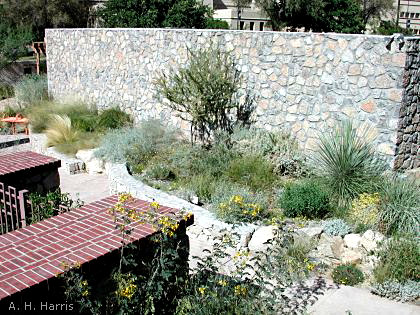

Some people are enamored of technological approaches in education, wishing to substitute technology for the real thing rather than using it as a tool to enhance teaching. Technology can indeed be a great help, but in many things, it's a poor excuse for hands-on experience.
In addressing the natural history of the Chihuahuan Desert, databases, pictures, models, and other products of technology are great aids in understanding and teaching. As yet, however, there are no substitutes for learning first hand from real things. Maybe it's psychological in some cases. Be that as it may, working with a child and a mounted skeleton of a pigeon, or with a living Autumn Sage growing free, and that child will learn more in minutes than in hours looking at the most detailed, three-dimensional images on a computer screen.
Technology doesn't come cheap--but neither does real. A single,
commercially prepared pigeon skeleton runs over $200, and a comprehensive educational
garden into the hundreds of thousands of dollars. Is it worthwhile? Consider--without
education, we'll lose our natural desert by default.

Contributor: Arthur H. Harris, Laboratory for Environmental Biology, Centennial Museum, University of Texas at El Paso.
Desert Diary is a joint production of the Centennial Museum and KTEP National Public Radio at the University of Texas at El Paso.

View of a portion of the Chihuahuan Desert Gardens—but a photograph is a poor stand-in for the real thing. Photograph by A.H. Harris, 2 Oct 2002.